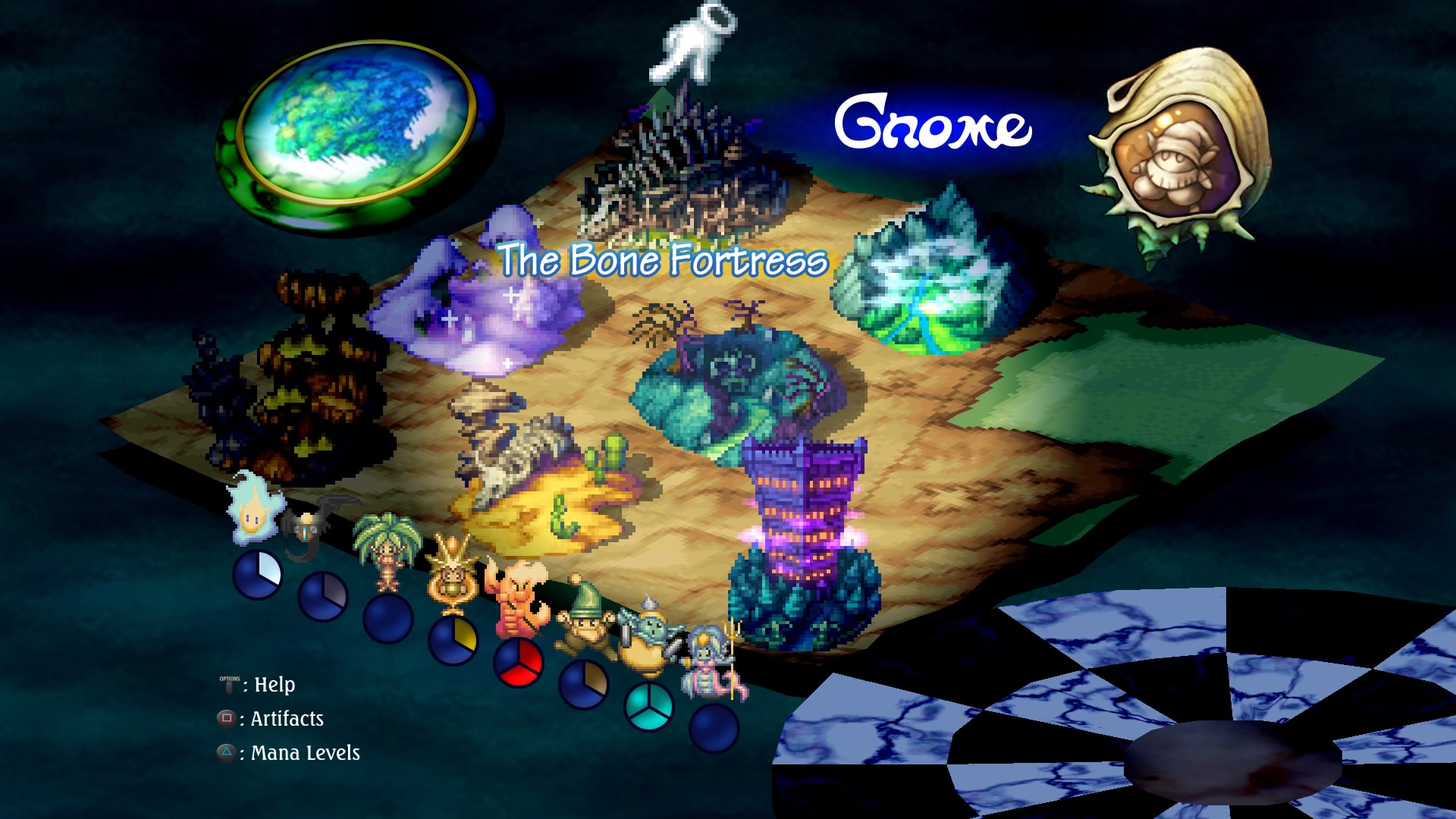

These omissions could make Legend of Mana a tough pill to swallow.
#Legend of mana remaster changes manual
It is especially painful since the original release came with an instruction manual that helped slightly (I miss instruction books with games) with information that isn’t included with this new release. This remaster would have been an excellent opportunity to add in more resources to help in this regard, similar to some of the additions made to SaGa Frontier Remaster. Tempering remains as poorly explained as it was originally, there are no mini-maps in dungeons, meaning it’s easy to find yourself lost, and progressing the story is still a lot of aimless wandering until it happens. For any old players hoping that some of Legend of Mana’s more convoluted and obtuse systems may be disappointed that the remaster doesn’t change or help with any of that. Unfortunately, many aspects of Legend of Mana have not aged well. I got hooked on the combat and grinding components, money, and experience like I did when I first played back in 2000. Respawning enemies is as simple as leaving the screen you’re on and coming back, making for some easy grinding. As you attack, you will be filling up a gauge that will allow you to unleash mighty ST (Special Techniques) that you have assigned to your shoulder buttons.
#Legend of mana remaster changes series
It retains the action-focused combat that the series is known for, albeit a bit slower. Should you keep on combat, the experience and systems remain as they were in the original. I found this to be especially helpful when I was scouring around to find where I was supposed to go, speeding up my exploration dramatically. This won’t prevent boss fights and some situational encounters, but with this turned on, you will be able to run through stages without a care in the world. Second, the option to turn off encounters has been added. Previously, saving and turning on co-op could only be done at the sprite statues scattered throughout the game. First up is an expanded save system that will allow you to save while toggling manual control over the second character from almost anywhere. This remaster also gets some handy new features that will help new and old fans alike. You can also listen to any of the tracks anytime using the new music player included within the game. For those purists out there, you can change to the original compositions whenever you want. Hearing the new track playing at my home for the first time instantly took me back to my childhood and hearing it for the first time in 2000. The absolute rockstar, pun intended, of this remaster are the brand new arrangements of tracks. Granted, I remember having similar issues when I played the original version too. This made for the occasional headache as I would be running around looking for where to go, only to realize after that there was a path by that one rock in the background. The only real complaint I have is that there were times where various entrances and exits in different areas blended, and it could be hard to tell that they would take you from one zone to the next. The style is still definitively the “Mana” aesthetic, and it pairs well with the bright and vivid detailed character sprites, which stand out. Looking at the original sprite-based backgrounds side-by-side with the new painted versions, little has been lost in this recreation. Character and monster sprites retain the same crisp and blocky sprites as the PlayStation original while replacing the backgrounds and portraits with painted reproductions. I am thrilled to report that this is not the case here. mixed.results with their visuals, with many drawing ire and disdain from longtime fans. Square Enix’s previous remaster escapades have resulted in. The original Legend of Mana showcased some of the most finely crafted pixel art of its time, accompanied by an equally fantastic soundtrack by Yoko Shimomura. Many of these individuals come with their quest lines and troubles to solve. Each location houses characters and creatures that add additional layers of spectacle and wonder, with few sprites being reused. By placing unique artifacts around the map, new cities, dungeons, and landscapes will spring up and offer you new avenues to opportunities to explore. The world is an empty canvas, and it is up to you how you rebuild it. The Legend of Mana offers considerable freedom of choice to its players to choose how they experience the game’s adventure.


 0 kommentar(er)
0 kommentar(er)
